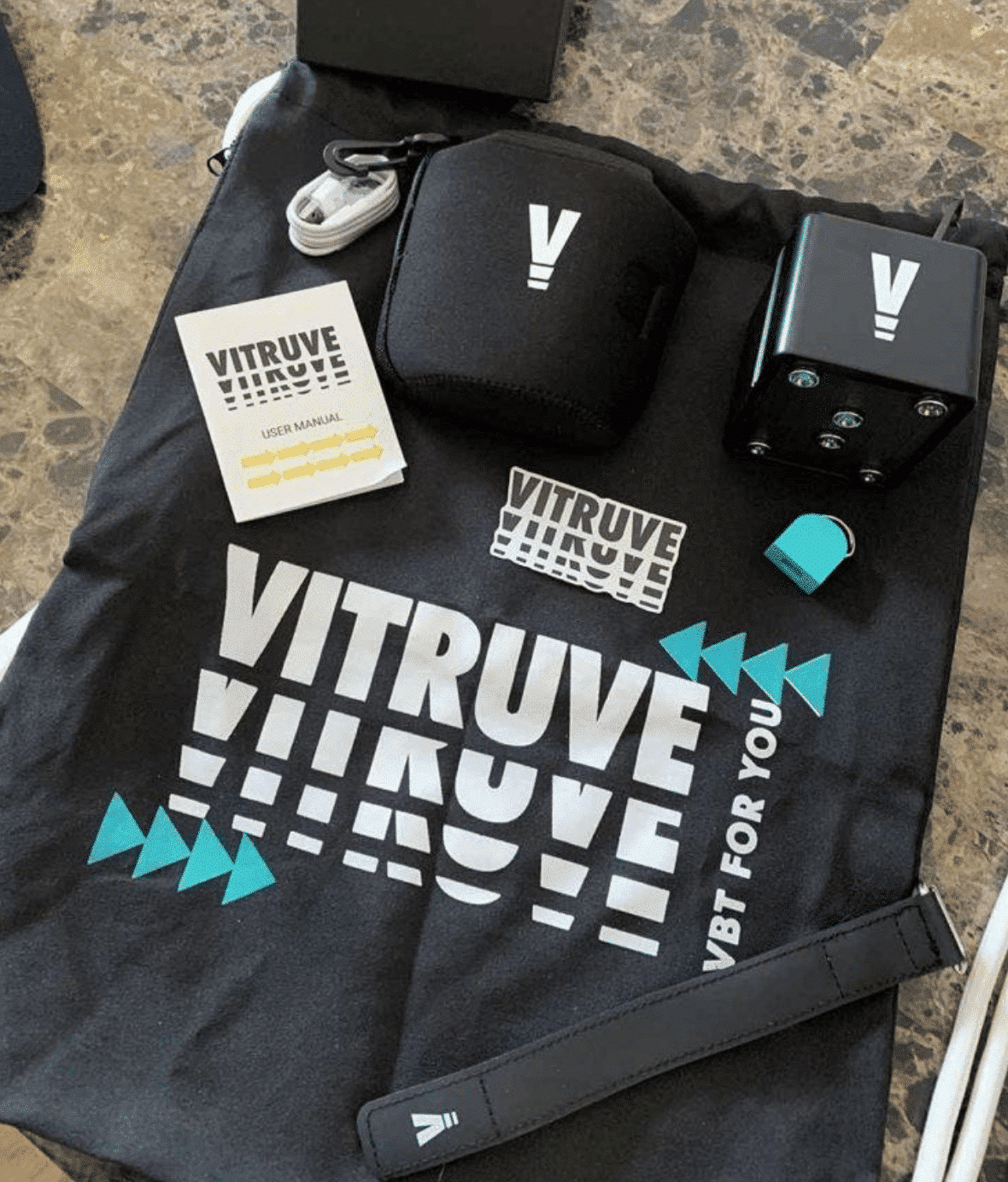3 de February de 2021
Strength and science Velocity Based Training
Velocity Based Training – A Beginner’s Guide
“Velocity”, “Velocity Based Training”, and “VBT” are terms popping up more and more in the strength and conditioning field and are being put into practice by coaches and athletes across the globe. But what exactly is it? Where do you begin?
Velocity Based Training. What’s That?
Of course, an understanding to what Velocity Based Training means is key to its utilization and getting the most out of it within your coaching or training. Velocity Based Training (VBT for short) is simply put a method of training which uses a piece of technology to measure the speed of a particular movement. This is usually done in the form of conventional barbell lifts, but it can also be used for jumps and other training expressions. Velocity Based Training is not new and has in fact been in use for many years. However, recent advancements in technology and information means it is becoming more accessible within every-day gym settings and applied to every-day athletes.
Why measure velocity? Numerous research studies have provided evidence that a greater training effect can be achieved through targeted velocity against a given load. Velocity tracking may be used to provide valuable data to improve performance, and strong relationships have been observed between velocity loss and measures of fatigue. Velocity data can provide objective feedback, estimate strength, be applied for accurate load prescriptions, among many more useful metrics to optimize an athlete’s training.
Learn About Your Tracker and Its Features
Get a device. Of course, measures of velocity are impossible to obtain without a tool to measure it in the first place! There are a number of tracking devices currently on the market of varying sizes and accuracies, and that range in price. Vitruve (formerly Speed4Lifts) offers an affordable linear encoder to measure velocity. The device is small and easily portable, and its accuracy has been validated against other devices. If you want to learn more about Vitruve system and how it stacks up, check the post from Sam Portland speaking about VBT devices.

Familiarize yourself with how to operate your device. Prior to incorporating velocity into your training, it is important to understand how to use your device properly. The first step is to learn how to property attach the device within your training and secure it to your surroundings. In the case of a Vitruve encoder, a simple clip of a magnet or loop of a Velcro strap does the trick. When the wire moves, you can view the velocity on the physical screen on the device or my means of an application displayed on another device. It is important to learn how to view the data obtained as well as modify the device setting to suit your needs and exercises. You can change the range of motion the device detects to ensure no “ghost reps” are recorded, learn how to switch between exercises, change between athletes, and more.
Acquire the proper accessories. A Vitruve encoder comes with a Velcro strap to attach to the barbell, a neoprene bag for storage, as well as a mico-B USB charger. Additional accessories can also be purchased such as a magnetic roller hook, and various mounts and attachments to best meet your various training needs and the exercises for which you will use velocity measurements.
Start collecting data. While a device by itself is great, records of your data with the storage of your data will be crucial to getting the most out of implementing velocity as a metric within your training. If using a Vitruve device, on an iPhone or iPad you can download the free Vitruve App and create your free account and profile. For coaches and Teams, a Teams App is also available. When managing multiple athletes, The Teams App is perfect in order to stay organized and have information data all in one place. With a Vitruve encoder you have the option to connect your device to your App through either Wi-Fi or Bluetooth making no access to internet never a barrier to training.
Incorporating VBT into Training
After you are familiar with your device, you can explore various programing strategies and incorporations of Velocity Based Training within your athletics.
Lift Fast. A crucial aspect of using velocity within training means being consistent in effort and intensity, and lifting with speed. It is important for an athlete to get used to training with intent and pushing every repetition at maximum speed possible. This will ensure data is accurate when lifting even when lifting different loads. Keep in mind that you are measuring velocity to make sure you’re moving the optimal weight at an optimal speed. No lazy reps!
Communicate & collaborate with your coach. If you have a coach, be sure to communicate with them and work together for your training and the use of data. Data is easily sharable all in one place from each session thanks to Vitruve Team App, and data from each session is also easily downloadable and shareable via CSV format. Ways to use VBT for any Strength Coach is a great start and includes using knowledge on your athlete’s load-velocity curve and lifting profile, daily 1RM and load planning, fatigue, competition, as well as the eccentric portion of an exercise.
Especially in today’s world where online programming and virtual coaching is becoming increasingly popular, the App and data sharing can be very useful. The data from the tracker can help both the coach and athlete make appropriate training decisions that are objective and the best possible for the session.
Establish a “Load Velocity Profile”. As load and velocity have a very close relationship, a Load Velocity Profile is a great starting point in implementing velocity-based training. A Load Velocity Profile aims to predict a one-repetition-maximum of an individual exercise – as a load increases the velocity decreases. On the Vitruve App you can easily complete a test and develop your unique formula by recording velocities at varying weights or resistances. This will give a picture of your unique velocity for each exercise and allow you to guide your future session training. Again, it is important to note that the relationships between loads of percentage of one-repetition-max and velocity vary between athletes and between different lifts. A great resource to learn more about Individualized Load Velocity Profiles can be found on This Blog Here.
Adjust to fluctuations in strength. Have you ever noticed some days you just aren’t as strong? Stress, sleep, nutrition, injury, can all be factors influencing performance on a given day. This is not a need to worry and is in fact normal, and the immediate feedback velocity-based training provide can help you adapt and adjust loads appropriately.
The Vitruve Blog provides a number of great articles and resources for implementing velocity into your training. Landyn Hickmott does an in-depth article outlining monitoring strategies within velocity-based training.
Train, Get Stronger, And Have Fun.
Through the tracker, you will gain a new awareness to your lifting, exercises, and sport like never before and you can optimize your performance and recovery.
I got started with a Vitruve tracker 7 months ago. Prior to that I had no idea what Velocity Based Training was, but I saw another athlete using one and my coach recommended it, so I gave it a go. The biggest step is just to start. As a powerlifter myself I have seen a lot of benefits to my training. Its provided objective data and allowed me to work at the velocities and weights that work best for me and my goals to make progress. The App is very easy to use and send the data with my coach to inform my training. In my squat especially I put on about 15kg in only a few months – almost a 10% increase. Especially during COVID lockdowns and training alone the tracker and data has kept me accountable, confident pushing heavy weights, lifting with intent and purpose and still competing against myself and the velocities of others around the world despite competitions being cancelled.
Stay up to date with new advancements in the field. Improvements on the App or encoder? Future updates to both the encoder and application will be able to be easily implemented as technology changes and Vitruve launches new features so you don’t need to purchase a new device every time. This means you can invested for the long term without worry. Stay up to date with the latest news by signing up for the Vitruve newsletter, and great contributions to the field can be found right here on the Vitruve blog.
What are you waiting for? #VTBForYou – It’s now time to put your tracker and the resulting data into action for your athletic goals. Athlete improvements never happen overnight, but instead take place after accumulation of training and consistency. Enjoy learning and the process of yourself and your lifting, make friends (who doesn’t love a bit of friendly competition of who can lift the fastest!) and don’t be afraid to make adjustments and try new things. With velocity as a metric within your training you will be able to measure and track changes in speed, as well as continuously monitor your performance like never before. Day after day and exercise after exercise you will be able to track your progress, push yourself, and visually see improvements and changes within your training. What more in a tool could a coach or athlete want!

